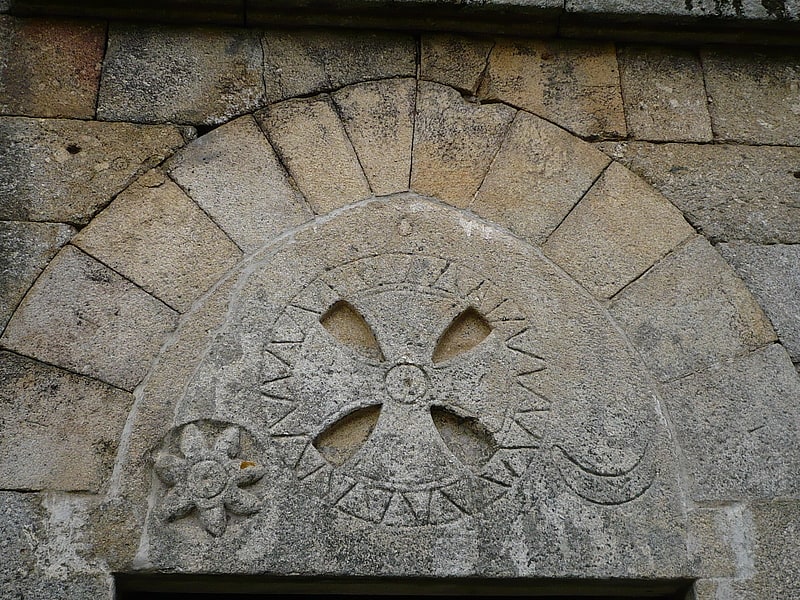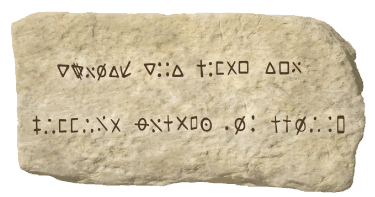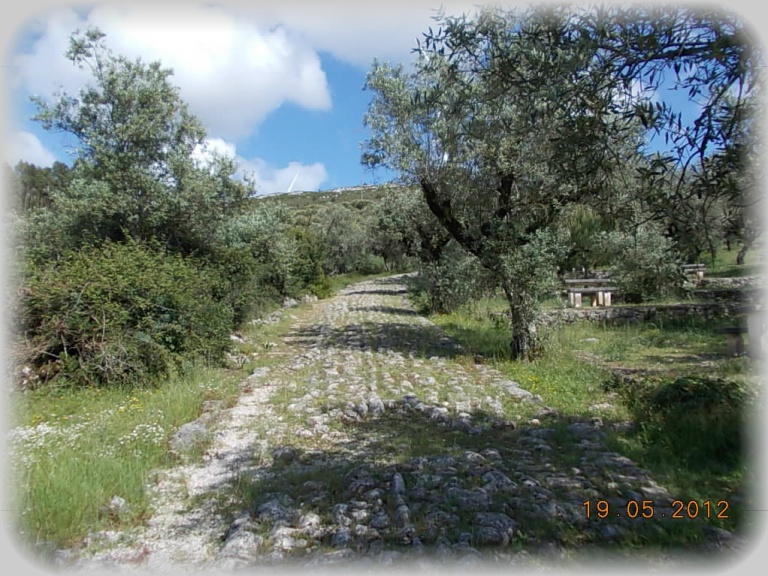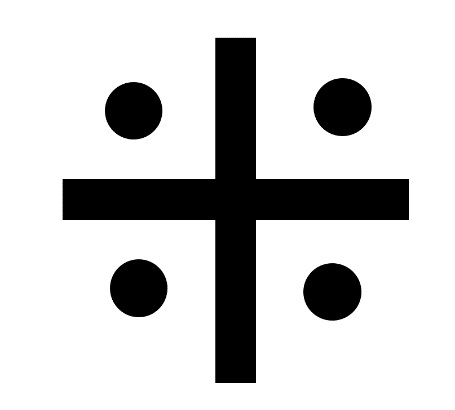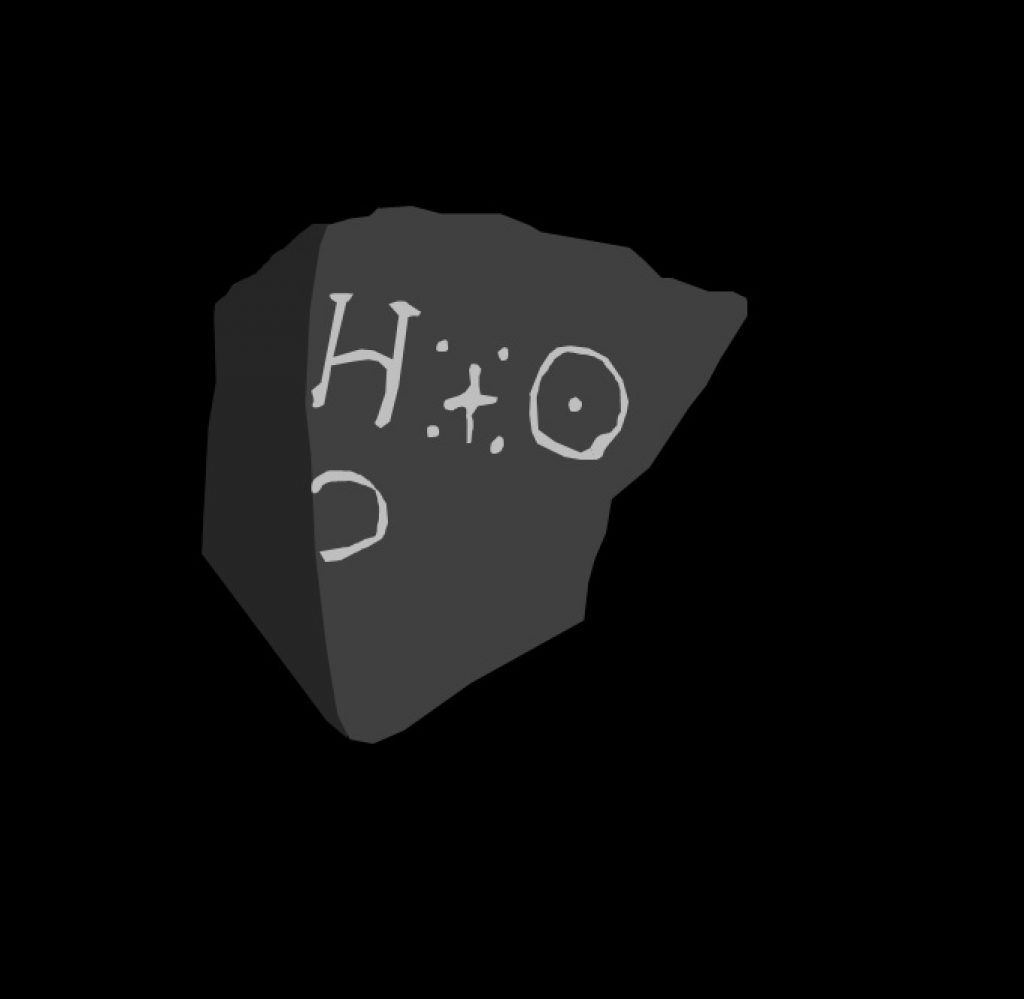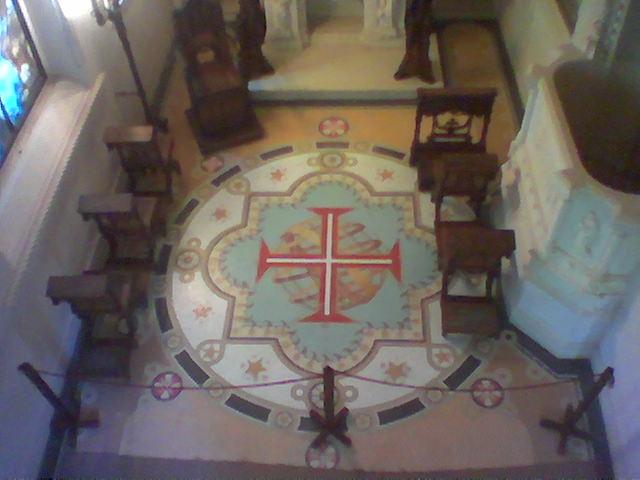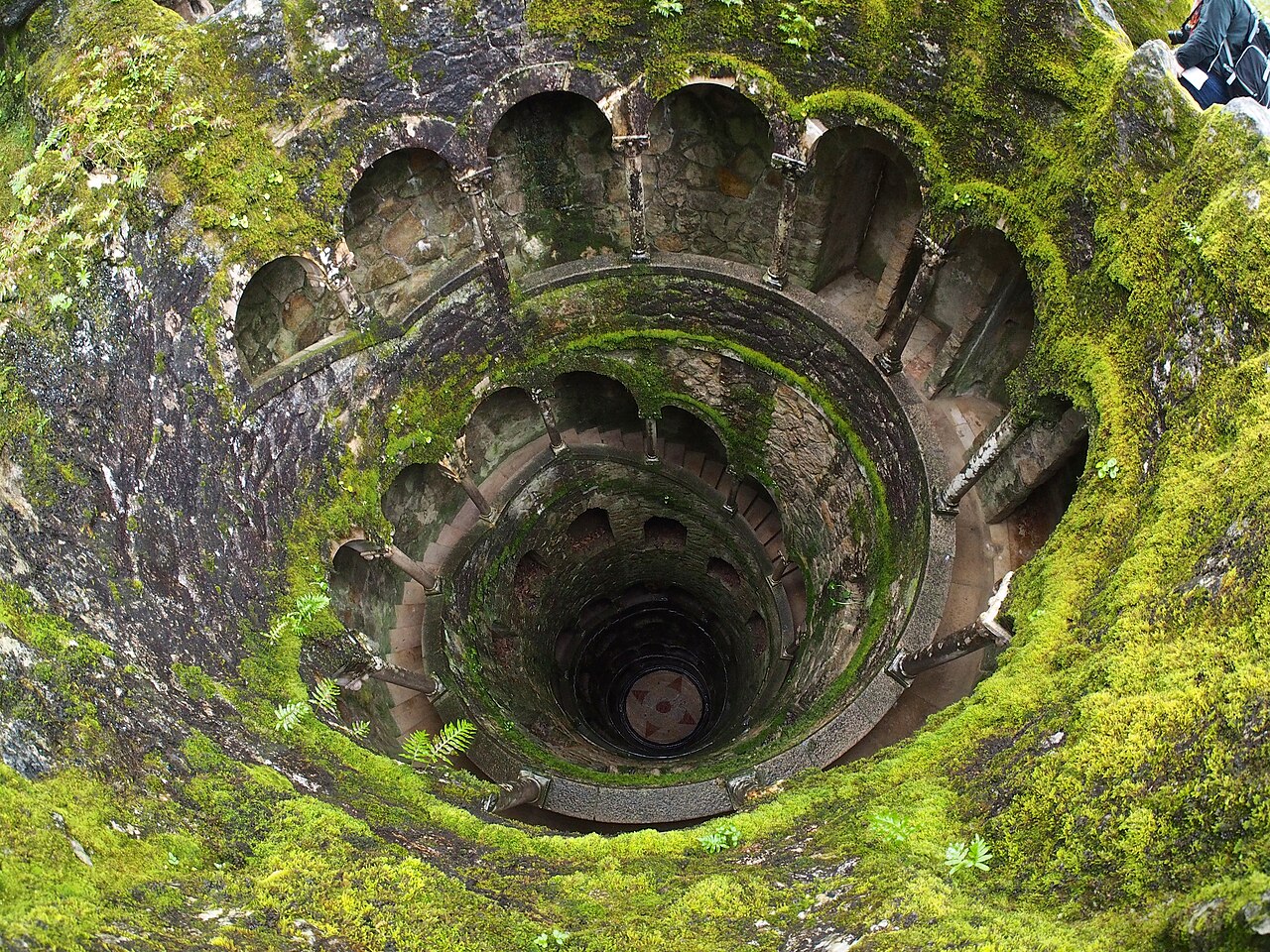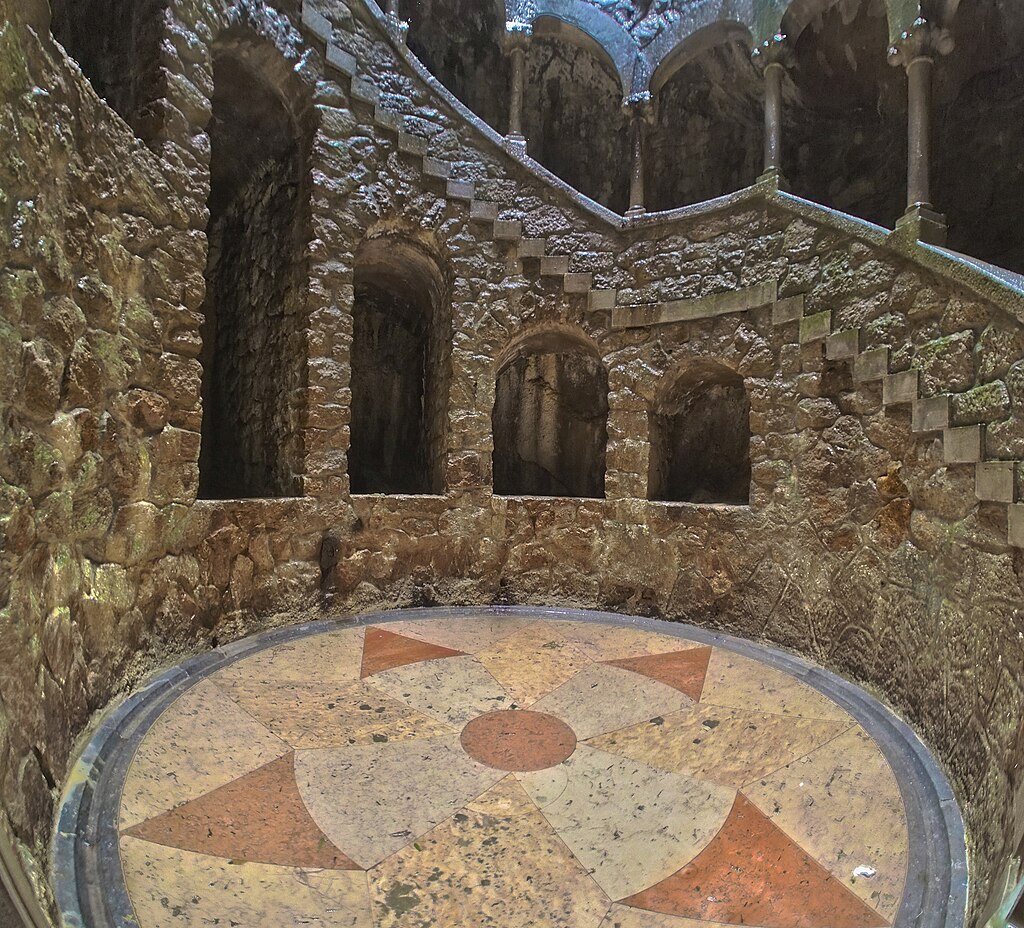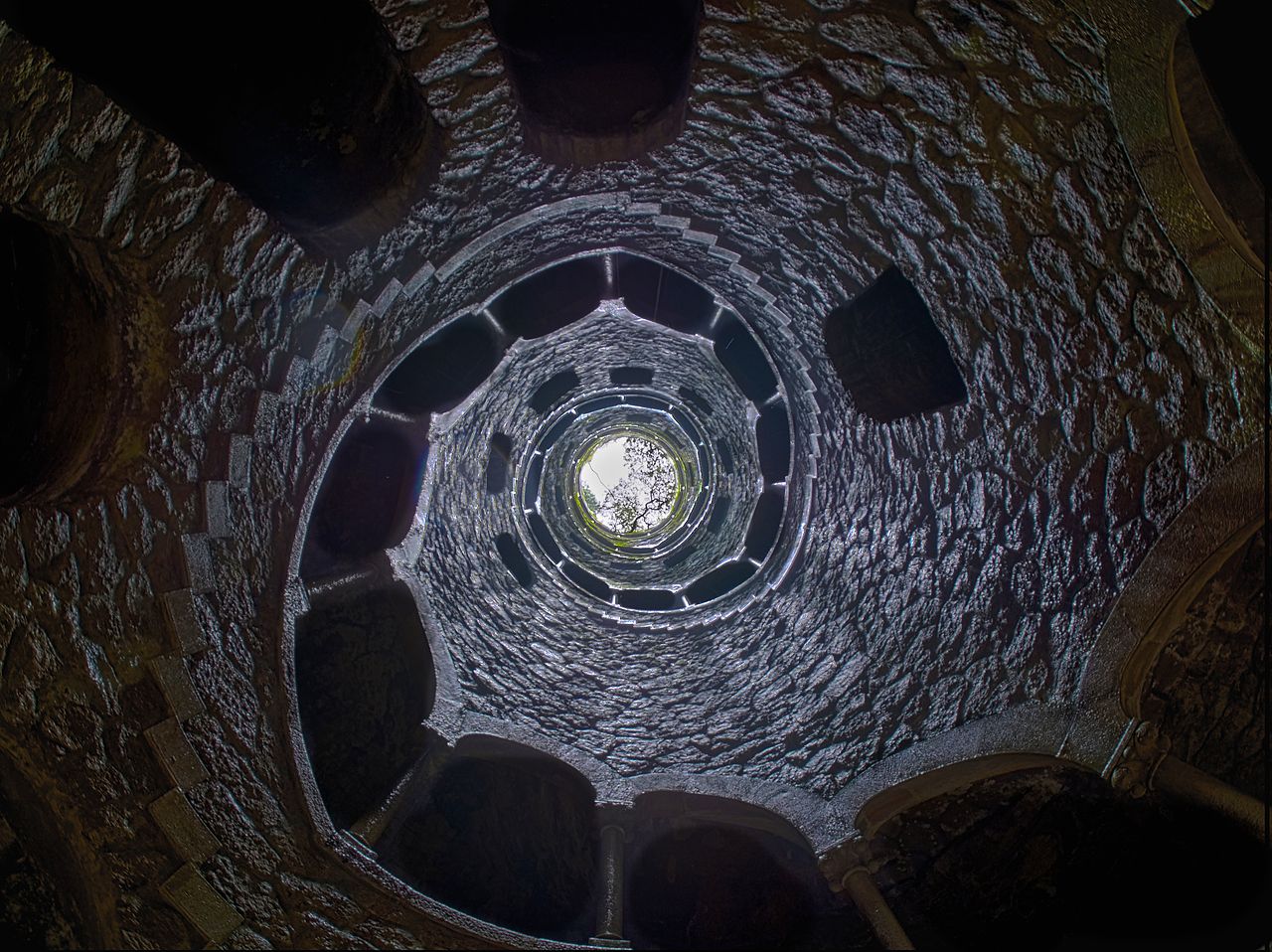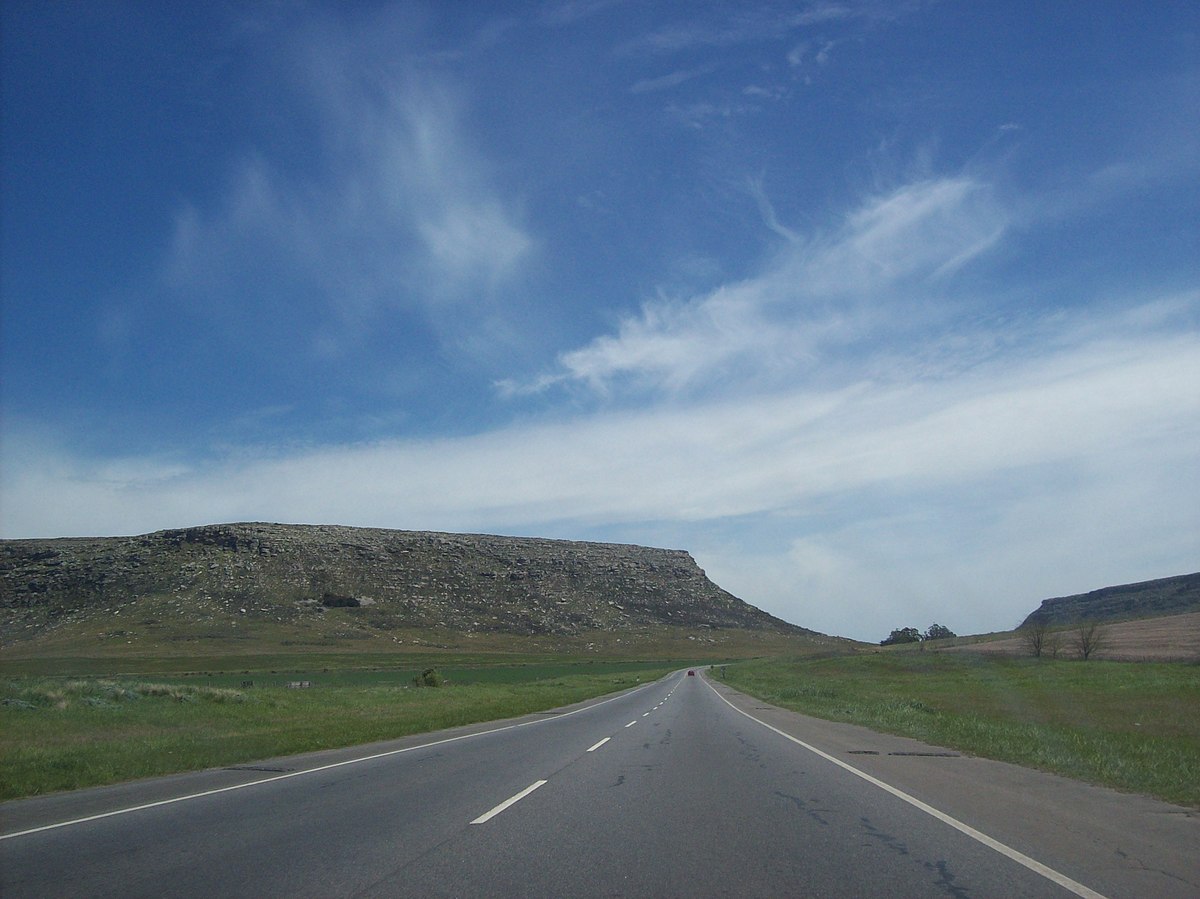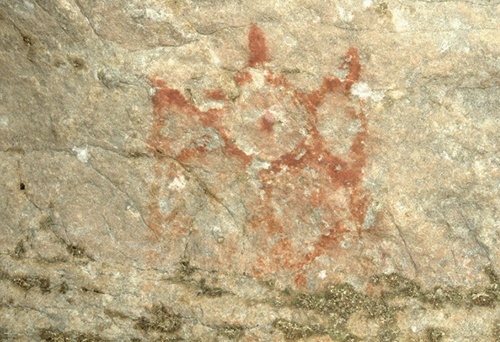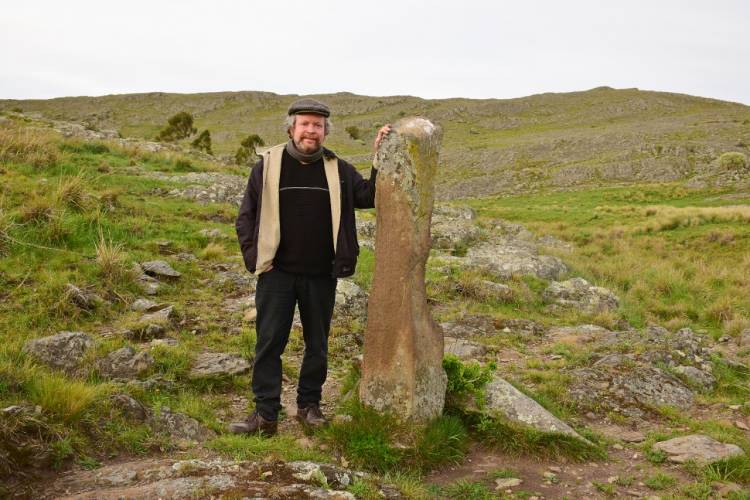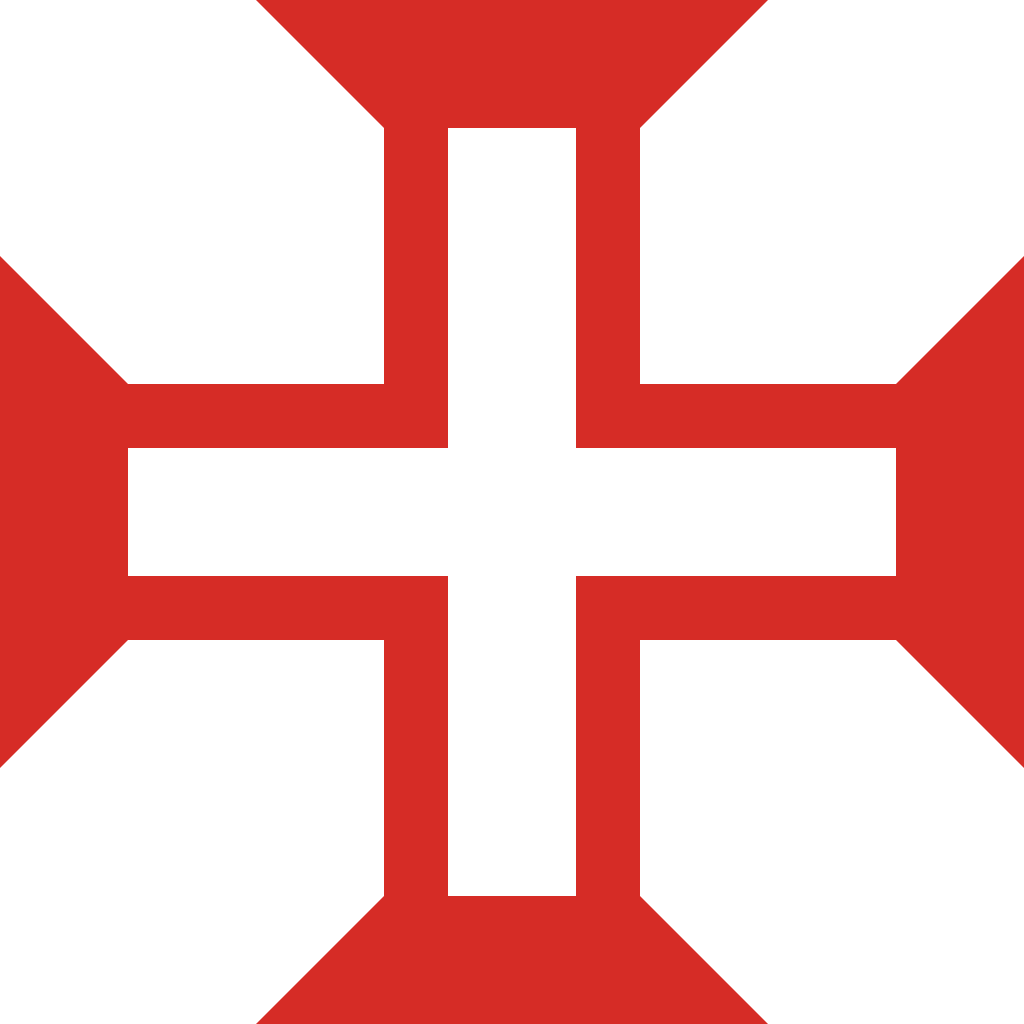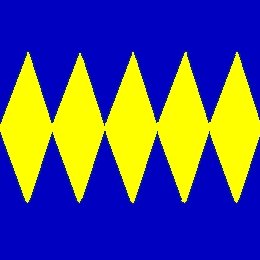I would like now to continue with my exploration of the Roscicrucians. I had intended to post my article on Rosicrucian America but something I read last week made me decide to leap forward in time to the late 19th and early 20th Centuries. Moreover, it may help to establish a possible link between General Karl Haushofer and the Thule Society and British Rosicrucians. This link was the British Golden Dawn Society, a Rosicrucian off shoot. You may recall that General Haushofer grew increasingly disillusioned with Adolph Hitler and tried to reach out to his contacts in the Golden Dawn Society in England to arrange peace talks to end the War. Indeed, it is highly likely that Haushofer influenced his former university student, Rudolf Hess, to undertake that ill-fated peace flight to Scotland in 1941. However, you may recall that the article said the Golden Dawn had become defunct by 1923. So who were the Golden Dawn and who were its influential members? To answer this, I set out below an article on the Golden Dawn produced on the website of the New World Encyclopedia. I have set out the article in full but have bolded certain parts in order to draw your attention to these particular sections, whilst elsewhere I have added my own brief commentary in red.
Hermetic Order of the Golden Dawn
See:
Hermetic Order of the Golden Dawn - New World Encyclopedia
The
Hermetic Order of the Golden Dawn was a magical order of the l
ate nineteenth and early twentieth centuries, which practiced various forms of theurgy and spiritual occultism. It was possibly the single greatest influence on twentieth century western Hermeticism. Concepts of magic and ritual that became core elements of many other traditions, including Wicca,
[1][2, Thelema, and other forms of magical spirituality popular today, were often drawn from the Golden Dawn tradition.
Golden Dawn Cross
The three founders, Dr. William Robert Woodman (1828 - December 20, 1891), William Wynn Westcott (December 17, 1848 - July 30, 1925), and Samuel Liddell MacGregor Mathers (1854 - 1918) were Freemasons and members of
Societas Rosicruciana in Anglia (S.R.I.A.),
[3] an appendix of Freemasonry. Westcott, also a member of the Theosophical Society, appears to have been the initial driving force behind the establishment of the Golden Dawn.
Influences on Golden Dawn include: Christian mysticism, Kaballah, Hermeticism, the religion of Ancient Egypt, Theurgy, Freemasonry, Alchemy, Theosophy, Eliphas Levi, Papus, Enochian magic, and Renaissance grimoires.
The Cipher Manuscripts
The Order of the Golden Dawn originated from a collection of documents known as the
Cipher Manuscripts, written in English
using a cipher attributed to German scholar Johannes Trithemius (1462 - 1516). These Manuscripts outlined the rituals of the Order, and prescribed a curriculum of graduated teachings encompassing
Hermetic Kaballah, Astrology, Tarot, Geomancy, and Alchemy.
According to accepted tradition, the manuscripts were handed from Kenneth Mackenzie, a Masonic scholar, to Rev. A.F.A. Woodford, whom in turn passed them on to Dr. Westcott. In 1887, it is said that Westcott allegedly managed to decode them. Westcott was pleased with his discovery, called on Samuel Liddell MacGregor Mathers for a second opinion, and asked for cooperation in turning the manuscripts into a coherent system for lodge work. Mathers and Dr. Westcott have been credited for developing the ritual outlines in the Cipher Manuscripts into a workable format.
[4] Mathers, however, is generally credited with the design of the curriculum and rituals of the Second Order, which he called the
Rosae Rubae et Aureae Crucis ("Ruby Rose and Golden Cross," or the
RR et AC).
[5]
An alternative history states that the Cipher Manuscripts were received by noted Masonic scholar Kenneth Mackenzie from the
Secret Chiefs of the "Third Order," a continental Rosicrucian mystery school into which Mackenzie had been initiated by Count Apponyi of Hungary.
[6][7][8][9][10] Using the Cipher Manuscripts, Mackenzie founded "The Society of Eight" as the first phase of what was to later become the Hermetic Order of the Golden Dawn. It should be noted in this context that Mackenzie's group was Temple No. 1, and Frederick Hockley, another member of "The Society of Eight," founded Temple No. 2. Thus when the Golden Dawn was founded, its first temple, Isis-Urania, was numbered as No. 3.
[11]
In October 1887, Westcott wrote to
Anna Sprengel, whose name and address he received through the decoding of the Cipher Manuscripts. A reply was purported to have been received with much wisdom, and honorary grades of Exempt Adept were conferred upon Westcott, Mathers, and Woodman, as well as a charter to establish a Golden Dawn temple to work the five grades outlined in the manuscripts.
[12][13]
In 1888, the Isis-Urania Temple in London was founded,
[12] in which the rituals decoded from the cipher manuscripts were developed and practiced.
[14] In addition, there was an insistence on women being allowed to participate in the Order in "perfect equality" with men, which was in contrast to the S.R.I.A. and Masonry.
[13]
The original Lodge founded in 1888 did not teach any magical practices per se (except for basic "banishing" rituals and meditation), but was rather a philosophical and metaphysical teaching order. This was called "the Outer Order," and for four years the Golden Dawn existed only in "the Outer."
The "Inner Order," which became active in 1892, was the circle of Adepts who had completed the entire course of study and Initiations of the Outer Order contained in the Cipher Manuscripts. This group eventually became known as the Second Order (the Outer Order being the "First" Order). [
MJF: Circles within circles!]
In a short time, the Osiris temple in Weston-Super-Mare, the Horus temple in Bradford, and the Amen-Ra temple in Edinburgh were founded. A few years after this, Mathers founded the Ahathoor temple in Paris.
[12]
In 1891, the correspondence with Anna Sprengel suddenly ceased, and
Westcott received word from Germany that either she was dead or her companions did not approve of the founding of the Order, and that no further contact was to be made. If the founders were to contact the Secret Chiefs, therefore, it had to be done on their own.
[15]
In 1892, Mathers claimed a link to the Secret Chiefs had been formed, and supplied rituals for the Second, or Inner, Order called the Red Rose and Cross of Gold.
[15]These rituals were
based on the tradition of the tomb of Christian Rosenkreuz, and a
Vault of Adepts became the controlling force behind the Outer Order.
[16] Later in 1916, Westcott claimed that Mathers also constructed these rituals from materials he received from Frater Lux ex Tenebris, a purported
Continental Adept.[17]
Some followers of the Golden Dawn tradition believe that the Secret Chiefs are not necessarily living humans or supernatural beings, but are symbolic of actual and legendary sources of spiritual esotericism, a great leader or teacher of a spiritual path or practice that found its way into the teachings of the Order.
[18]
By the mid-1890s, the Golden Dawn was well established in Great Britain, with membership rising to over a hundred from every class of Victorian society.
[19] In its heyday, many cultural celebrities belonged to the Golden Dawn, such as actress Florence Farr and
Irish revolutionary Maud Gonne (Gonne left after she converted to
Roman Catholicism). Some well known members included Arthur Machen, William Butler Yeats, Evelyn Underhill, and
Aleister Crowley. Many men and women of the nineteenth century
Fin de siècle social culture were members of the Golden Dawn.
Around 1897, Westcott broke all ties to the Golden Dawn, leaving Mathers in complete control. It is speculated that this was due to some occult papers having been found in a hansom cab, in which his connection to the Golden Dawn came to the attention of his superiors. He was told to either resign from the Order or to give up his occupation as coroner.
[20]
While there is no proof of Mathers having planted the papers, it appears that the relationship between Mathers and Westcott all but ended after this point. After Westcott's departure, Mathers appointed Florence Farr to be Chief Adept in Anglia (Although Westcott publicly resigned, he must have continued in some capacity since there are Lodge documents bearing his signature dated years after his "resignation").
This left Mathers as the only active founding member and in charge of the Order. Due to personality clashes with other members, and being absent from the center of Lodge activity in Great Britain, challenges to Mathers' authority as leader began to develop amongst the members of the Second Order.
The revolt
Towards the end of 1899, the Adepts of the Isis-Urania and Amen-Ra temples had become extremely dissatisfied with Mathers' leadership, as well as his growing friendship with Crowley. They were also anxious to make contact with the Secret Chiefs, instead of dealing with them through Mathers.
[21] Among the personal disagreements within the Isis-Urania temple, disputes were arising from
Florence Farr's The Sphere, a secret society within the Isis-Urania, and the rest of the Adept Minors.
[21]
Crowley was refused initiation into the Adeptus Minor grade by the London officials. Mathers, however, overrode this and quickly initiated him at the Ahathoor temple in Paris on January 16, 1900.
[22] Upon his return to the London temple, he requested the grade papers to which he was now entitled from Miss Cracknell, the acting secretary. To the London Adepts, this was the last straw. Farr, already of the opinion that the London temple should be closed, wrote to Mathers expressing her wish to resign as his representative, though she was willing to carry on until a successor was found.
[22]
Mathers replied to this on February 16, believing Westcott was behind this turn of events. Once the other Adepts in London were notified, they elected a committee of seven on March 3rd and requested a full investigation of the matter. Mathers sent an immediate reply, declining to provide proof, refusing to acknowledge the London temple, and dismissing Farr as his representative on March 23rd.
[23] In response, a general meeting was called on March 29 in London to remove Mathers as chief and expel him from the Order.
[24]
In 1901, W. B. Yeats privately published a pamphlet titled
Is the Order of R. R. @ A. C. to Remain a Magical Order?[25] After the Isis-Urania temple claimed its independence, there were even more disputes, leading to Yeats resigning.
[26] A committee of three was to temporarily govern, which included P.W. Bullock, M.W. Blackden and J. W. Brodie-Innes. After a short time, Bullock resigned, and Dr. Robert Felkin took his place.
[27]
In 1903, Arthur Edward Waite and Blackden joined forces to retain the name Isis-Urania, while Felkin and other London members formed the Stella Matutina, Yeats remaining in it until 1921, and Brodie-Innes continued his Amen-Ra temple in Edinburgh.
[28]
Once Mathers realized that there was to be no reconciliation, he began to make efforts to reestablish himself in London. The Bradford and Weston-super-Mare temples remained loyal to him, but their numbers were few.
[29] He then appointed Edward Berridge as his representative, who proceeded to begin working the ceremonies and rites of the Golden Dawn in West London as early as 1903.
[30] According to Francis King, historical evidence shows that there were "twenty three members of a flourishing Second Order under Berridge-Mathers in 1913."
[30]
J.W. Brodie-Innes continued the direction of the Amen-Ra temple, and had reached a conclusion that the revolt was unjustified. By 1908, Mathers and Brodie-Innes were in complete accord.
[31] According to sources that differ regarding the actual date, sometime between 1901 and 1913
Mathers renamed the branch of the Golden Dawn remaining loyal to his leadership to Alpha et Omega.
[32][33][34][35]
Brodie-Innes assumed command of the English and Scottish temples, while Mathers concentrated on building up his Ahathoor temple and extending his American connection.
[33] According to Israel Regardie, the Golden Dawn had spread to the
United States of America before 1900, and a Thoth-Hermes temple had been founded in Chicago.
[33][31] By the commencement of the First World War, Mathers had established two to three American temples.
Most temples of the Alpha & Omega and Stella Matutina closed or went into abeyance by the end of the 1930s, with the exceptions of two Stella Matutina temples: Hermes Temple in Bristol, UK, which operated sporadically until 1970, and the Whare Ra in Havelock North, New Zealand, which worked regularly until its closure in 1978.
[36][37]
The Golden Dawn system was based on an initiated hierarchal order similar to that of a Masonic Lodge, however women were admitted on an equal basis with men.
The "Golden Dawn" technically refers to only the first or "outer" of three Orders, although all three are often collectively described as the "Golden Dawn." The First Order taught esoteric philosophy based on the Hermetic Qabalah and personal development through study and awareness of the four Classical Elements. They also taught the basics of astrology, tarot, and geomancy. The Second or "Inner" Order, the Rosae Rubeae et Aureae Crucis (the Ruby Rose and Cross of Gold), taught magic proper, including scrying*, astral travel, and Alchemy). The fabled Third Order was that of the "Secret Chiefs," who were said to be great adepts no longer in incarnate form, but who directed the activities of the lower two orders by spirit communication with the Chiefs of the Second Order.
*"Scrying" (derived from the old English word "descry" meaning "to make out dimly") or "seeing" is the name for the practice of looking into a suitable medium (like a crystal ball, stones or mirrors (a psychomanteum) in the hope of detecting significant messages or visions. This was the method practised by seers such as Nostradamus and Edward Kelley. One class of method of scrying involves, however, a self-induced trance, with or without the aid of a medium. This was the type of scrying practised by Emma Hardinge Britten, the trance medium for the Orphic Circle to which Edward Bulwer-Lytton and Lewis Carroll belonged.
The different grades of the Order are listed below:
First Order:
- Introduction—Neophyte 0=0
- Zelator 1=10
- Theoricus 2=9
- Practicus 3=8
- Philosophus 4=7
Second Order:
- Intermediate—Portal Grade
- Adeptus Minorus 5=6
- Adeptus Majorus 6=5
- Adeptus Exemptus 7=4
Third Order:
- Magister Templi 8=3
- Magus 9=2
- Ipsissimus 10=1
The paired numbers attached to the Grades relate to positions on the Tree of Life. The Neophyte Grade of "0=0" indicates no position on the Tree. For the others, the first numeral is the number of steps up from the bottom (Malkuth), and the second numeral is the number of steps down from the top (Kether).
The First Order Grades were related to the four Classical Elements of Earth, Air, Water, and Fire, respectively. The Aspirant to a Grade received instruction on the metaphysical meaning of each of these Elements and had to pass a written examination and demonstrate certain skills to receive Admission to that Grade.
The Portal Grade was the initiation ritual for admittance to the Second Order. The Circle of existing Adepts from the Second Order had to consent to allow an Aspirant to join the Second Order.
MJF: The term "portal" is an interesting one given what the C's have told us about portals. Spoiler Alert, but the term portal will take on a much deeper meaning in later posts that I hope to do.
The Second Order was not, properly, part of the "Golden Dawn," but a separate Order in its own right, known as the R.R. et A.C. The Second Order directed the teachings of the First Order and was the governing force behind the First Order.
After passing the Portal, the Aspirant was instructed in the techniques of practical Magic. When another examination was passed, and the other Adepts consented, the Aspirant attained the Grade of Adeptus Minor (5=6). There were also four sub-Grades of instruction for the Adeptus Minor, again relating to the four Outer Order grades.
A member of the Second Order had the power and authority to initiate aspirants to the First Order, though usually not without the permission of the Chiefs of his or her Lodge.
The Golden Dawn book
The
Golden Dawn as system and book has been the most intensively used source for modern western occult and magical writing. As a book it is both a text and an Encyclopedia.
[38]
Known Members:
- Sara Allgood (1879–1950), Irish stage actress and later film actress in United States.
- Allan Bennett (1872–1923), best known for introducing Buddhism to the West.
- Arnold Bennett (1867–1931), a British novelist.
- Dr. Edward Berridge, homeopathic physician.
- Algernon Blackwood (1869–1951), English writer and radio broadcaster of supernatural stories.
- Aleister Crowley (1875–1947), German occult writer and mountaineer, founder of neo-paganism movement in Germany.
- Florence Farr (1860–1917), London stage actress and musician.
- Robert Felkin (1853–1925), medical missionary, explorer and anthropologist in Central Africa, author.
- Frederick Leigh Gardner.
- Maud Gonne (1866–1953), Irish Revolutionary, author, feminist.
- Annie Horniman (1860–1937), repertory theatre producer and pioneer. Her father was a wealthy tea importer (he also endowed the Horniman Museum and Library in London); her family's wealth funded most of the Golden Dawn's activities. Consequently, she was one of the very few members immune to the in-fighting and competitiveness which ultimately led to the Order's dissolution.
- Bulwer Lytton, author of The Last Days of Pompeii.
- Arthur Machen (1863–1947), a leading London journalist of the 1890s, Welsh by birth and upbringing.
- Gustav Meyrink (1868–1932), Austrian author, storyteller, dramatist, translator, banker, and Buddhist.
- E. Nesbit (1858–1924), real name Edith Bland: English author and political activist.
- Charles Rosher (1885–1974), cinematographer.
- Pamela Colman Smith (1878–1951), fin de siècle artist and co-creator of the Rider-Waite Tarot deck.
- William Sharp (1855–1905), poet and author, alias "Fiona MacLeod."
- Evelyn Underhill (1875–1941), Christian Mystic, author of Mysticism: A Study in Nature and Development of Spiritual Consciousness.
- Arthur Edward Waite (1857–1942), author, Freemason and co-creator of the Rider-Waite Tarot deck.
- William Butler Yeats (1865–1939), Irish poet, dramatist, and writer, Nobel Prize for Literature (1923).
- Bram Stoker [39][40](1847–1912), Irish writer, best known today for his 1897 horror novel Dracula.
MJF: It is interesting how many Rosicrucians tend to be novelists, playwriters and poets. Given what we know about the literary circle that formed around the Rosicrucian Sir Francis Bacon, who may have been the true inspiration behind and/or the writers of Shakespeare's plays, this fact may not be so surprising. Paraphrasing the C's who once said words to the effect that fiction can be used to disguise the deepest of truths (if someone could find the exact quote, I would be obliged).
However, I would draw your attention once again to the presence of Edward Bulwer-Lytton, a Rosicrucian and alleged member of the Orphic Circle, on that list. Again we can see at work here the principle of circles within circles through Bulwer-Lytton's presence in the Golden Dawn. And let us not forget the connections that some members of the Orphic Circle had with contacts in Germany and the so-called Berlin Brotherhood. See also: "The Magician" 1873, by Edward Bulwer-Lytton
Contemporary Golden Dawn Orders
While no temples in the original chartered lineage of the Golden Dawn survived past the 1970s, several organizations have since revived its teachings and rituals. Among these, the following are particularly significant:
- The Hermetic Order of the Golden Dawn, Inc. [1].
- The Open Source Order of the Golden Dawn [2].
- Ordo Stella Matutina [3].
Notes
- ↑ Ithell Colquhoun. (1975) The Sword of Wisdom: MacGregor Mathers and the GOLDEN DAWN. (New York: G.P. Putnam's Sons.)
- ↑ Julia Phillips, (1991) History of Wicca in England: 1939 - present day. Lecture at the Wiccan Conference in Canberra, 1991.
- ↑ Israel Regardie. What you should know about the Golden Dawn, 6th edition. (New Falcon Publications, 1993), 10
- ↑ Golden Dawn researcher R.A. Gilbert has found evidence which suggests that Westcott was instrumental in developing the Order's rituals from the Cipher Manuscripts. See Gilbert's article, "From Cipher to Enigma: The Role of William Wynn Westcott in the Creation of the Hermetic Order of the Golden Dawn," from Carroll Runyon's book Secrets of the Golden Dawn Cypher Manuscripts. (C.H.S., 1997)
- ↑ Regardie, 1993, 92
- ↑ Bruce Wilson, (1947). “The Origins of our Rosicrucian Society,” in The Historical Notes of the SRIA, 1947, 7. (A copy of this article may be obtained directly from the SRIA in England for verification purposes).
- ↑ R.A. Gilbert (1983) The Golden Dawn: Twilight of the magicians, the rise and fall of a magical order. 15. (Aquarian Press, 1983. ISBN 0850302781)
- ↑ W.W. Westcott (1915). “The Rosicrucian Society of England,” 2.
- ↑ Israel Regardie (1971). My Rosicrucian Adventure. (St. Paul, MN: Llewellyn Publications), 10
- ↑ Regardie (1971). The Original Account of the Teachings, Rites and Ceremonies of the Hermetic Order of The Golden Dawn, 6th ed., (St. Paul, MN: Llewellyn Publications), 17.
- ↑ Wilson, 1947, 16.
- ↑ Jump up to:12.0 12.1 12.2 Francis King. Modern Ritual Magic: The Rise of Western Occultism. (New York: Avery Publishing1989), 43
- ↑ Jump up to:13.0 13.1 Regardie, 1993, 11.
- ↑ King, 1997, 35
- ↑ Jump up to:15.0 15.1 King, 1989, 43
- ↑ King, 1989, 44
- ↑ King, 1989, 46
- ↑ Christopher Penczak. Spirit Allies. (Red Wheel/Weiser Books. ISBN 1578632145), 27
- ↑ King, 1989, 47
- ↑ King, 1989, 48
- ↑ Jump up to:21.0 21.1 King, 1989, 66
- ↑ Jump up to:22.0 22.1 King, 1989, 67
- ↑ King, 1989, 68-69
- ↑ King, 1989, 69
- ↑ J. Gordon Melton, (ed), Encyclopedia of Occultism and Parapsychology, Vol. 2, (Gale Group, 2001. ISBN 0810394898), 1327
- ↑ King, 1989, 78
- ↑ King, 1989, 94
- ↑ King, 1989, 95-96
- ↑ King, 1989, 109
- ↑ Jump up to:30.0 30.1 King, 1989, 110
- ↑ Jump up to:31.0 31.1 Regardie, 1993, 33
- ↑ King, 1971, 110-111
- ↑ Jump up to:33.0 33.1 33.2 King, 1989, 111
- ↑ "The Golden Dawn ceased to exist by that name after October, 1901, replaced by Mathers' Alpha et Omega and the London group’s Order of the Morgan Rothe. No longer associated with the SRIA after 1902, Mathers continued to oversee a few temples until his death, when his wife, Moina, assumed supervision." Samuel Liddel MacGregor Mathers biography, Grand Lodge of British Columbia and Yukon, February 26, 2001 Retrieved June 19, 2008.
- ↑ Chic Cicero and Sandra Tabatha Cicero, Golden Dawn Time Line, Llewellyn Encyclopedia. Retrieved June 19, 2008.
- ↑ Golden Dawn Companion, ed. R. A. Gilbert, (Aquarian Press, 1986. ISBN 0850304369)
- ↑ Llewellyn Encyclopedia. online Golden Dawn Time Line. Retrieved June 19, 2008.
- ↑ Carl L. Weschcke, The Golden Dawn. (St. Paul, MN: Llewellen Pubs, 1982), Publishers Preface
- ↑ Trevor Ravenscroft. The occult power behind the spear which pierced the side of Christ. (Newburyport, MA: Red Wheel/Weiser Books, 1982. ISBN 0877285470), 165
- ↑ Lynn Picknett. The Templar Revelation: Secret Guardians of the True Identity of Christ. (New York: Simon and Schuster, 2004. ISBN 0743273257), 201
References
ISBN links support NWE through referral fees
- Fra. A.o.C. (2002). A Short Treatise on the History, Culture and Practices of The Hermetic Order of the Golden Dawn. Retrieved August 3, 2007.
- Armstrong, Allan, and R.A. Gilbert, (eds. (1997). Golden Dawn: The Proceedings of the Golden Dawn Conference, London - 1997. Hermetic Research Trust.
- Cicero, Chic and Tabatha (1991). The New Golden Dawn Ritual Tarot. St. Paul, MN: Llewellyn Publications. ISBN 0875421393
- Colquhoun, Ithell. Sword of Wisdom: Macgregor Mathers and the Golden Dawn. Neville Spearman, 1975. ISBN 0854350926.
- Gilbert, Robert A. The Golden Dawn: Twilight of the Magicians. The Aquarian Press, 1983. ISBN 0-85030-278-1.
- Gilbert, Robert A. The Golden Dawn Companion. Weiser Books, (1986) ISBN 0-85030-436-9
- Gilbert, Robert A. Golden Dawn Scrapbook - The Rise and Fall of a Magical Order. Weiser Books (1998) ISBN 1578630371
- Greer, Mary K. Women of the Golden Dawn. Park Street, 1994. ISBN 0892815167.
- Greer, Mary K. and Darcy Kuntz. (1999) The Chronology of the Golden Dawn. Holmes Publishing Group, ISBN 155818354X
- Howe, Ellic. The Magicians of the Golden Dawn: A Documentary History of a Magical Order 1887-1923. Samuel Weiser, 1978. ISBN 0877283699.
- Mathers, S.L., et al. Ritual Magic of the Golden Dawn, edited by Francis King. 1997. ISBN 0892816171
- King, Francis. (1989) Modern Ritual Magic: The Rise of Western Occultism. New York: Avery Publishing ISBN 1853270326
- King, Francis. (1971) The Rites of Modern Occult Magic- A Fascinating Account of the Events and Personalities Involved in the Renaissance of Medieval Magic and Alchemy. New York: Macmillan Company, ASIN: B001281B3Y
- Melton, J. Gordon, (ed), Encyclopedia of Occultism and Parapsychology, Vol. 2, Gale Group, 2001. ISBN 0810394898
- Regardie, Israel, et al., eds., The Golden Dawn: A Complete Course in Practical Ceremonial Magic. St. Paul, MN: Llewellyn, 1989. ISBN 0875426638
- Penczak, Christopher. Spirit Allies. Red Wheel/Weiser Books. ISBN 1578632145
- Regardie, Israel. What you should know about the Golden Dawn, 6th edition. New Falcon Publications, 1993. ISBN 1561840645
- Regardie, Israel. (1971). My Rosicrucian Adventure: A contribution to a recent phase of the history of magic, and a study in the technique of theurgy. 10. (original 1936) St. Paul, MN: Llewellyn Publications. ASIN: B001AYI7WS
- Regardie, Israel. The Golden Dawn. Llewellyn Publications, 1982. ISBN 0875426646
- Runyon, Carroll. Secrets of the Golden Dawn Cipher Manuscripts. C.H.S., 1997. ISBN 0965488128
- Suster, Gerald. (1990) Crowley's Apprentice: The Life and Ideas of Israel Regardie. Weiser Books. ISBN 0877287007
- Wasserman, James. (2005) The Mystery Traditions: Secret Symbols and Sacred Art. Rochester, Vermont: Destiny Books. ISBN 1594770883
External links
All links retrieved December 22, 2017.
Credits
New World Encyclopedia writers and editors rewrote and completed the
Wikipedia article in accordance with
New World Encyclopedia standards. This article abides by terms of the
Creative Commons CC-by-sa 3.0 License (CC-by-sa), which may be used and disseminated with proper attribution. Credit is due under the terms of this license that can reference both the
New World Encyclopedia contributors and the selfless volunteer contributors of the Wikimedia Foundation. To cite this article
click here for a list of acceptable citing formats.The history of earlier contributions by wikipedians is accessible to researchers here:
The history of this article since it was imported to
New World Encyclopedia:
There is one other name on that membership list that I would like to focus on in part 2 of this post and that is the Irish novelist Bram Stoker, who is probably best known for his classic horror tale Dracula, which forms a veritable landmark in the history of the horror novel genre and is also a beloved subject of horror film makers for over a century now. Although I have previously mentioned the influence of novelists such as Edward Bulwer-Lytton and Jules Verne (both of whom were Rosicrucians) in the science fiction genre (one can also add Gene Roddenberry to this list too), Bram Stoker had has had a similar effect within the horror story genre along with more modern horror story novelists such as H P Lovecraft, Stephen King and Anna Rice (who also wrote Vampire stories). I seem to recall the C's once confirming in the transcripts that dark forces (STS) were working on the sub-consciousness of both King and Rice to inspire their stories (perhaps this was yet another example of Thor's Pantheon at work?). If anyone can find the relevant section in the transcripts bearing this out, I would be obliged if they could post it.
However, Stoker's novel, if not the first vampire novel, is certainly the daddy of them all. The tale of an ancient bloodsucking vampire count, who perpetuates his existence by living off the blood of the living, recalls in some ways the importance of human and animal blood as nutrition to the Lizard beings and the Greys when visiting 3rd density. Indeed, it may be this that has underpinned animal and human sacrifice down through the ages. Hence, Stoker may have been tapping into a much older tradition than that simply of the vampire. But vampires can also change shape in these horror stories, which means that they can be labelled as "trans-definitive" or as shapeshifters, like the Lizards and Greys. And, of course the roots of the Rosicrucians lie in the Rosteem who entered into a pact with the Elohim, who although originally human became trans-definitive (like Dracula):
Session dated 7 March 1995:
Q: (L) Who were the Elohim of the Bible?
A: Transdefinitive. And variable entities. [...] First manifestation was human, then non-human. [...]
Q: (L) Well, what brought about their transformation from human to non-human?
A: Pact or covenant.
Q: (L) They made a pact or covenant with each other?
A: No, with 4th density STS.
Q: (L) Well, that is not good! Are you saying that the Elohim are STS? Who were these STS beings they made a pact with?
A: Rosteem, now manifests as Rosicrucians.
Q: (L) What is their purpose?
A: As yet unrevealable to you.
Hence, we learn from the above that the Rosteem (who now manifest as the Rosicrucians) were 4th density STS who made a pact or covenant with the Elohim (could this be the basis of the Nordic Covenant?).
Anyway, the fact that we have a modern-day Roscrucian writing a novel about a trans-definitive, variable entity, blood sucking being makes one wonder about Stoker's inspiration in writing Dracula (which was written episodically). However, this is not the only horror novel he wrote for another of his stories became the inspiration for all the Egyptian Mummy films that have been released over the years.
In part 2 of this post, I will take a closer look at Stoker and at the Egyptian influences that led him to write the The Jewel of the Seven Stars’ .

